(1018 products available)

















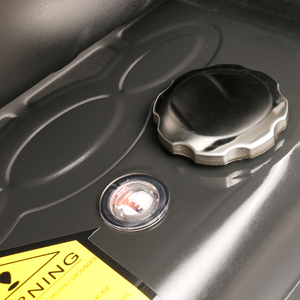




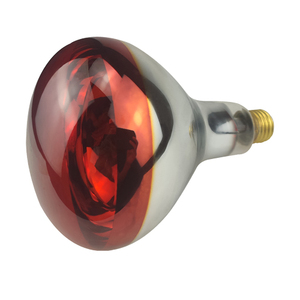
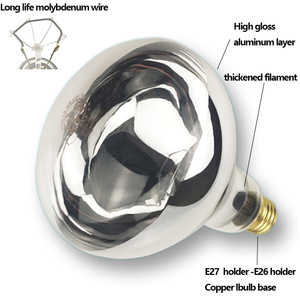
































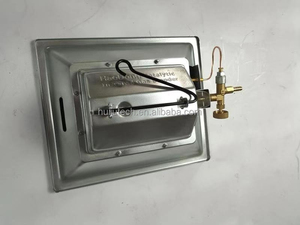















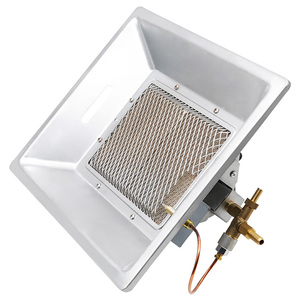

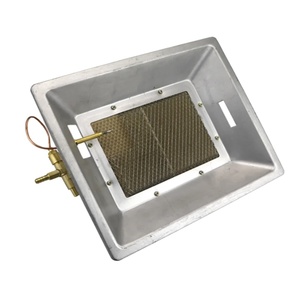

















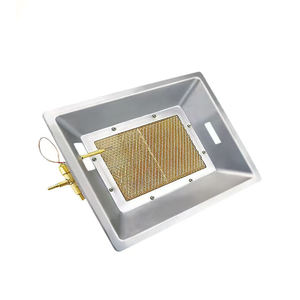


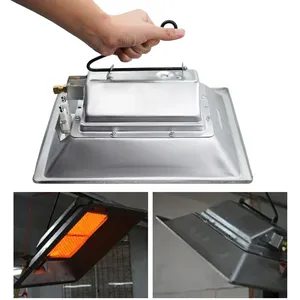



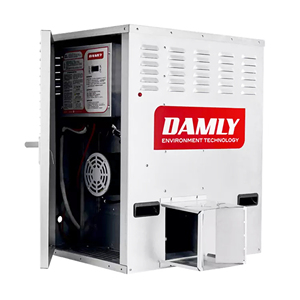




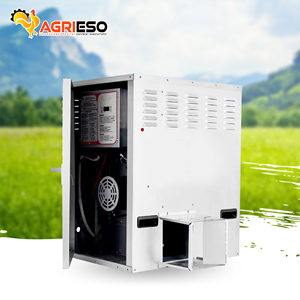


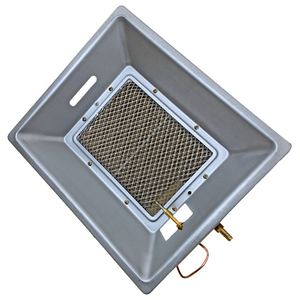

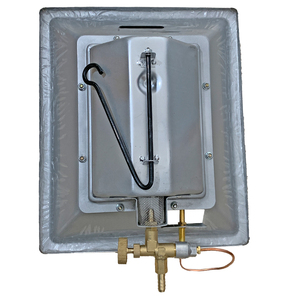





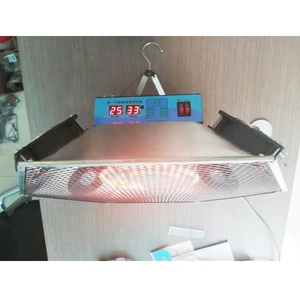









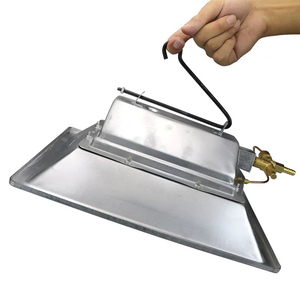






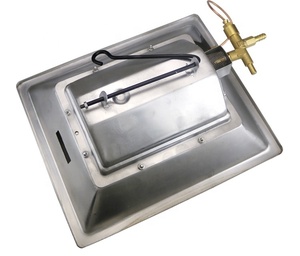

















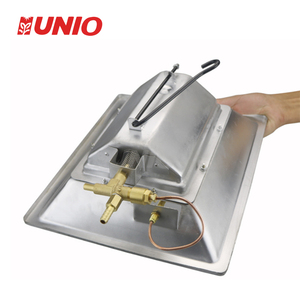



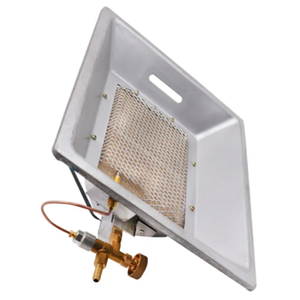
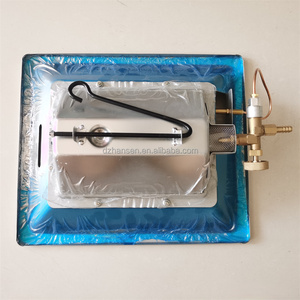











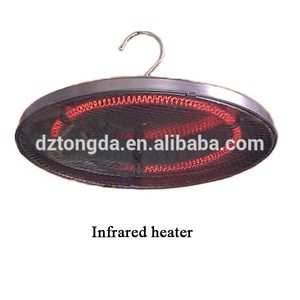















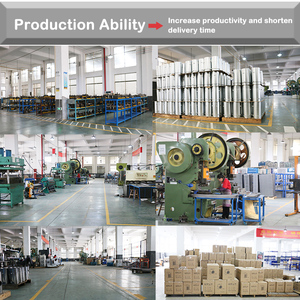


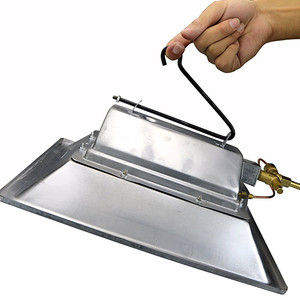















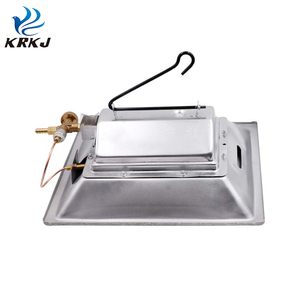
There are various kinds of poultry infrared gas brooders intended for certain large-scale farming uses. These instruments' important elements include their energy source, heating method, and installation style.
These brooders are the typical models seen on farms because they are cheap and simple to operate. All types of chicks may be heated using direct flame gas infrared heaters. These can employ natural gas or propane as fuel, which are both easily accessible in most rural or agricultural regions. With heat plates designed for gas brooders, gas-guzzling heat can be preserved for hours, saving the gas bill.
This is the type of gas brooder preferred on large farms with the infrastructure to support high capacity. Infrared gas brooder heat plates are used to warm thousands of chicks at once in commercial hatcheries or poultry facilities. Because they are extremely strong and can endure constant use, these brooders are ideal for big industries that need long-term investments.
Though portable heating plates are not typical, some farms with mobile housing for chicks might utilize portable gas infrared heaters. For farmers that raise chicks outside in temporary shelters, these small, easily movable heaters are perfect. They are light and simple to transport, so they can be used on different sites as needed.
The continuous gas infrared heater is typically the most advanced kind, using both gas and electricity. It works by constantly maintaining a set temperature using gas as its primary energy source and electricity operating the thermostat. These brooders are suitable for industrial-scale poultry farms with a constant need for heating and high capacity. Because the environment is well controlled, they also decrease heating expenses by eliminating the need for frequent broiler recall.
Commercial-scale poultry farming greatly benefits from infrared gas brooders. These systems ensure that chicks grow in the preferred temperature ranges even if outside weather conditions are adverse.
Poultry houses often employ several gas brooders to provide uniform heat. These brooders ensure that chicks thrive in optimal conditions, improving survival rates and growth. Infrared brooders can also reduce energy costs by using efficient heating methods, especially in large barns.
In hatcheries, gas infrared brooders maintain a stable, warm environment for newly hatched chicks until they are moved to grow-out facilities. These brooders provide the precise temperature control required for effective chick rearing. Infrared gas heat plates are preferred in hatcheries because of their uniform heat distribution and high-efficiency properties.
Broiler farms raise chickens for meat, so they require brooders that can handle high-capacity chick rearing. Gas brooders are used here because they can heat large spaces quickly and effectively. Because most infrared gas brooders offer adjustable heat settings, the temperature can be adjusted for different stages of chick development. This helps the chickens develop evenly and be healthy.
Broilers require extra heating at times, especially during harsh winters. Infrared gas brooders can serve as supplemental heating sources to backup systems during extremely cold weather. Farmers easily install portable gas heaters in temporary shelters to provide extra heating during the harsh weather or when raising chicks in mobile housing.
IR gas brooders help prepare chicks for the outdoors by providing a warm, safe area to grow strong before being introduced to their natural environment. The controlled heat ensures they develop at the right pace, ready to thrive outside.
Heat source
Gas brooders use either propane or natural gas as their primary heat source. Propane is commonly used in rural or remote areas where natural gas pipelines are not available. Natural gas is more economical for large-scale operations with pipeline access.
Infrared heating system
Gas brooders utilize infrared heating technology, which differs from traditional convection heating methods. Infrared heaters emit radiant heat that directly warms objects, animals, and surfaces within their line of sight. This is opposed to warming the entire air volume, as conventional heaters do.
Heat retention plate
This consists of metal or ceramic materials that absorb and radiate heat. The plates retain heat even when the burner cycles off, allowing the brooder to maintain a consistent temperature despite fluctuations in gas pressure or the external environment.
Brooder size/capacity
Poultry infrared gas brooders come in various sizes and capacities, ranging from small units for 100 or fewer chicks to large commercial brooders capable of supporting thousands of chicks simultaneously. The brooder's size and capacity should match the scale of the poultry operation.
Heat control system
Commercial infrared gas brooders typically have thermostats and valves that provide precise temperature control. The thermostat monitors the brooder's temperature, and when it falls below the set point, the gas valve opens to ignite the burner. This maintains the desired temperature range for chick development.
Distribution of heat
Infrared gas brooders are designed to distribute heat uniformly across the brooder area. This is significant for preventing hot or cold spots that could affect chick health. The placement and alignment of the infrared heaters influence heat distribution.
Safety mechanisms
Brooders have several safety features to prevent accidents, including gas leaks and fires. They are equipped with safety switches that shut off the gas supply if the burner flames go out. Many brooders also have carbon monoxide detectors that alert the operator to dangerous gas levels.
Location
The gas brooder should be installed at the point of maximum chick interest. Chicks seek the most heat, so this direct position under the brooder plate is where they'll gather. Be careful not to place the brooder near drafts, feed, or water stations, which could mislead the chicks.
Height
Brooders should be high enough for chicks to move freely below but low enough for them to reach the warmth directly. Adjust the height according to the type of chick; newly hatched ones require the brooder closer, while older ones can tolerate it further up. Most heat plates will have height adjustments to position them properly for your chicks' age.
Materials
The gas line should be made of iron or steel since it is the system's most crucial and possibly dangerous component. Always use materials that are heat-resistant and durable, such as ceramics or metals like iron or aluminum for heat retention plates.
Mobility
If portable gas heaters are used, ensure the setup allows for easy movement of the brooder as needed. Wheels or handles can be employed for portability, especially in mobile farming systems.
Regular gas line checks
These are crucial for safety and efficiency. Inspect the gas lines for wear, leaks, or damage. Any signs of deterioration require immediate replacement. Performing a soapy water test to check for leaks is advisable. Never use the brooder until all leaks are fixed. Monitor gas usage; if consumption suddenly increases, that may indicate a leak.
Heat plates need regular checks
Heat plates are the most crucial element of the infrared brooder since they are responsible for providing heat. Look for cracks, warping, or other signs of wear. Replace damaged plates immediately, as they can affect heating efficiency. Ensure the plates are clean and free of grease or debris, as that will affect heat absorption and emission.
Regular burner cleaning
Maintaining clean burners is crucial for even gas combustion and heat distribution. Remove any grease, debris, or residue from the burner surface using a wire brush or vacuum. Following the manufacturer's specific maintenance instructions during each brooder's maintenance routine is necessary.
Thermostat calibration
This ensures accurate temperature control of the brooder. Regularly compare the thermostat's reading with an external thermometer to check for accuracy. If there are significant discrepancies, recalibrate or replace the thermostat as needed. Failure to have a properly calibrated thermostat may lead to undercooked or overcooked chicks.
Carbon monoxide detector
This is a necessary component to monitor gas levels and ensure operator safety. Frequently check that the detectors are working and positioned correctly within the farming space. Replace batteries or the detector unit as recommended by the manufacturer. This reduces false alarms or malfunctioning, which can put the farm at risk.
Regular inspections
Conduct thorough inspections looking for signs of wear and tear or potential safety issues. Regular inspection prevents small problems from turning into big issues that could harm chicks or the farm. Look for rust, cracks, or loose parts, and replace any worn items immediately. This keeps the brooders functioning at optimal capacity and ensures the brooders last through many chick cycles.
Efficient heat transfer
This quickly increases the temperature in the brood space since infrared gas heaters radiate heat directly to chicks, feed, and water rather than warming the surrounding air. This direct heat ensures chicks remain warm even in drafty conditions, as the heat does not immediately rise and dissipate like with conventional heaters.
Uniform heat distribution
This is due to the way infrared heaters radiate heat in all directions rather than just convectively rising. No matter where they settle in the brooding area, chicks will receive consistent warmth as long as they stay within the heater's line of sight. This uniformity aids in preventing the formation of 'hot' or 'cold' areas that can hinder growing chicks' smooth development and health.
Fuel efficiency
This is because gas brooders utilize infrared technology, which requires less fuel than traditional electric or convection heaters. They save money over time and allow for greener farming practices and lower utility costs, particularly where electricity is pricey.
Weather independence
Having a gas brooder is weather independent since they will always work as long as there is gas. They are ideal for farmers in areas where severe weather might cause electrical failures or other issues with electric heaters. This reliability in any weather guarantees that chick warmth is always maintained.
Scalability
Gas heaters are easily scaled up, which makes them easier to add as the poultry operation expands. Whether running a small farm or a large commercial operation, gas brooders can be installed in the required numbers to satisfy the needs of the space. This makes them flexible for farms of various sizes, from smallholders to large commercial sites.
Initial costs
Infrared gas heaters typically have higher up-front purchase costs than electric or conventional space heaters. The cost might be prohibitive for small-scale or beginner poultry farmers. The cost may be offset over time with increased efficiency and lower operating costs, but initial investment can be a hurdle for some.
Gas dependence
This means they depend on a comfortable supply of natural or propane gas. This is not accessible everywhere and might create logistical issues for farmers in remote areas without reliable gas supply access. Keeping gas on hand requires planning, and any interruptions in supply would harm chick welfare.
Carbon emissions
Brooders release greenhouse gases and carbon monoxide into the atmosphere, which can be dangerous to chick health in poorly ventilated spaces. Constant monitoring is required to protect against elevated CO levels, which is not an issue with electric heaters. Effective ventilation is crucial, which may require extra work and resources to ensure that lethal gas levels do not accumulate.
Safety concerns
Infrared gas heaters can cause fires and gas leaks, posing safety risks to poultry farms. Close monitoring, regular maintenance, and proper installation are crucial to mitigate these risks. Even with all of this, the potential safety problems associated with gas and infrared technology are not present with electric heaters.
Infrared limitation
Infrared heat only warms what is in its straight path, meaning any shade, obstruction, or object between the heater and the chicks can cause uneven heat distribution. This may require extra brooders or positioning to guarantee all chicks remain warm and comfortable in their environment.
A1: A gas brooder helps maintain warmth for newly hatched chicks in poultry farming. It provides a consistent heat source, promoting growth and comfort in large-scale operations.
A2: The infrared gas brooder uses a gas flame to create infrared radiation, which directly warms objects, including chicks, within its range, rather than heating the air.
A3: Both are effective, but propane is often preferred for remote areas without natural gas pipelines since it's easily accessible. There are situations where natural gas is more cost-effective for larger-scale operations.
A4: Infrared heaters provide targeted, radiant heat that directly warms chicks, feed, and water, ensuring they stay warm even in drafty conditions. It is faster and more efficient than conventional methods.
A5: Regular maintenance and inspection are essential. Farmers should check for gas leaks, install carbon monoxide detectors, and ensure proper ventilation. Using heaters with built-in safety features also reduces risk.